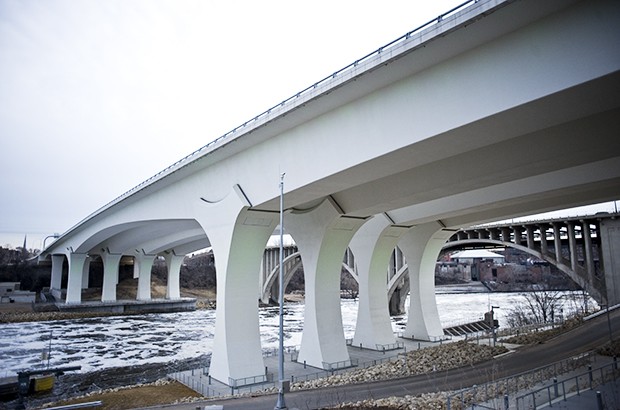When the Interstate 35W bridge collapsed on Aug. 1, 2007, 13 people were killed, 145 were injured and as time goes on, more and more victims have begun seeking compensation. What started as four lawsuits filed last November has now escalated in more than 100 different families, relatives and survivors suing a construction company and an engineering firm for negligence causing the I-35W bridge to collapse. In two separate lawsuits families are suing the URS Corp., in charge of inspecting and maintaining the bridge, and Progressive Contractors Inc. , the construction company that had materials piled on the bridge the day it collapsed. Both companies are being sued for negligence and breach of contract: URS for failing to identify and repair weaknesses in the bridge, and St. Michael, Minn.-based PCI for loading more than 500,000 pounds of sand and gravel on the bridge, which lawyers say contributed to the collapse.
New findings
Chris Messerly, one of the attorneys representing 117 families on a public service basis, has not filed any lawsuits yet, but announced last week an expert report stating that the National Transportation Safety BoardâÄôs findings were inaccurate. Thorton Tomasetti , an international engineering organization hired by MesserlyâÄôs team of lawyers, determined that a corroded roller bearing caused the bridge to collapse. This opinion stands in contrast to the NTSBâÄôs findings, which claimed an under designed U-10 gusset plate âÄî a steel joint that ties beams together on a bridge âÄî gave way causing the collapse. Roller bearings allow a bridge to shrink and expand according to temperature and relieve tension from other parts of a bridge. The I-35W bridge’s roller bearings were corroded, which stopped them from expanding and contracting like they were designed to do. The corroded bearings, combined with added weight and heat on the bridge that day caused the collapse, Messerly said. MesserlyâÄôs experts agree that the gusset plate gave way, but said it was because the plate was attached to the corroded roller bearing by a diagonal chord. âÄúItâÄôs the first time when anyone has explained why it collapsed and why it collapsed on that day,âÄù Messerly said. University of Minnesota researchers in the civil engineering department did an independent study of the collapse and, like the NTSB, found that the gusset plates were the cause. Taichiro Okazaki , who was part of the University research team, said they looked into the roller bearings, but determined that the combined factors such as heat and added weight, were still not enough cause the bearings to give way. But Okazaki is not surprised that the lawyersâÄô experts are getting different results. âÄúThere are so many factors that we donâÄôt know exactly about the bridge,âÄù he said. âÄúAny simulation is a result of an assumption thatâÄôs brought in, and itâÄôs possible to tweak assumptions to gain a desired result.âÄù Terry Williams, spokesman for the NTSB, said the board stands by its investigation, but would not make any further comments. But Kyle Hart, an attorney defending PCI, said the plaintiffs are âÄúgrasping at straws,âÄù in their attempts to sue the construction company. âÄúEveryone who has looked at the weight we had on the bridge maintained that if the bridge was properly designed and maintained it would have been okay,âÄù he said. Hart is currently defending the construction company against the initial lawsuits filed in November, and will also defend it against the large number of lawsuits MesserlyâÄôs team plans to file. âÄúPeople are looking for somebody with pockets to pick,âÄù Hart said. âÄúItâÄôs unfortunate that we were in the wrong place at the wrong time.âÄù
Initial suits
The initial lawsuits âÄî separate from the suits Messerly is working on âÄî were filed by Jim Schwebel the day the NTSB released the results of a year-long investigation of the bridge collapse. While these cases are pending, Richard Nygaard, an attorney working with Schwebel , said they have picked up about 20 more families whose cases have not yet been filed. While MesserlyâÄôs experts have found the NTSBâÄôs findings to be inaccurate, Nygaard said their experts agree with the NTSB conclusion that the gusset plates were âÄúoverwhelminglyâÄù the cause of the collapse. But, there could be debate on why the bridge fell that day, Nygaard said. He said he will remain skeptical until Messerly releases his engineerâÄôs report. In the affidavit used in the lawsuits, Nygaard said there is evidence that the URS firm had photographic evidence that the gusset plates were buckling, but were âÄútoo busyâÄù to issue for repairs. Nygaard also said URS completed a gusset plate analysis in 2007 on a freeway bridge in Pennsylvania, and did repairs âÄî something that was not to the I-35W bridge. All of the lawsuits in both firms must be filed before Aug. 1, 2009 âÄî the two year anniversary of the collapse. The deadline is set by a state statute of limitations that mandates someone injured by defective property must file suit within two years of the injury. Messerly said he expects to file suit by June.

















